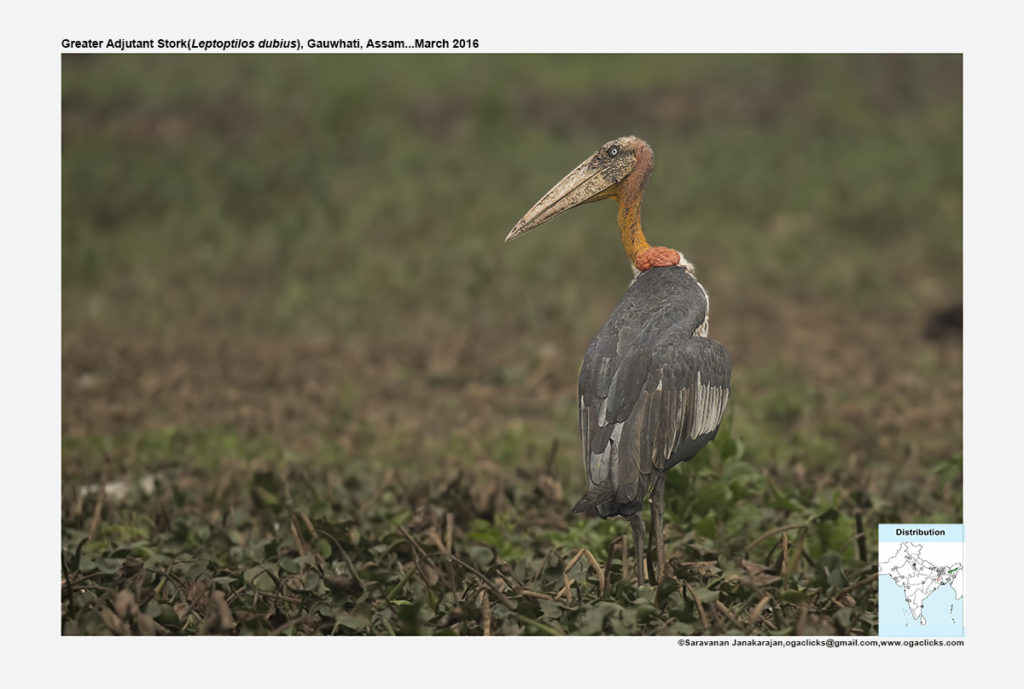Greater Adjutant Stork

Greater Adjutant Stork Leptoptilos dubius
Etymology:
- Leptoptilos : Greek word leptos – delicate, slender; ptilon –feather.
- Dubius : Latin word for Doubtful, dubious
Vernacular Names: Hindi: Hargila, Garud, Pedadhauk, Dusta, Sans: Bruhatbak, Pun: Badhing, Gillhar, Bi: Dhenk, Ass: Hargila, Ben: Hargila, Guj: Jamadardhonk, Moto jamadar, Mar: MothaShatrabalak, Ori: Hadagila, Te: Peenigalakonga
Distribution inIndia: Resident in Assam, India. (The garbage dump outside Guwahati is the best place to see it).
Description: Size of 120-150-cm. It is a huge, dark stork with very heavy, dark-based pale bill and pendulous saffron-yellow neck-pouch; forehead and face mostly dark brown or blackish, but head and neck redder. Head covered with dark scabs of dried blood. Pale grey greater coverts and tertials contrasting with otherwise dark upper wing; underwing-coverts paler than flight feathers, with fine white fringes to wing-linings; has white axillary spur. Legs dark with reddish upper tibia in breeding season but can appear whitish or grey, due to Urohydrosis. Non-breeding adult has upperparts darker and blacker; lack of hair-like feathers on nape, more uniformly pinkish head and neck, pronounced white ruff on neck and paler, more bluish grey upperparts.
Habitat: It is found Marshes, lakes, lakes, paddy fields, open deciduous and freshwater flooded forest; often in dry areas, such as grassland and fallow fields. Also found at carcasses and rubbish dumps at edges of towns and in open fields
Food Habits: They eat Carrion and large fish. They also eat frogs, bats, reptiles, rats, large insects and crustacean.They also eat injured wild ducks, ducklings. Associates with other scavengers such as kites and vultures at carcasses of cattle, rubbish dumps and human burial grounds.
Breeding Habits: They breed in Nov-Jan.Nests in large, sometimes mixed colonies at traditional sites, Shares colonies with lesser adjutant stork, but also nests alongside Spot-billed Pelican. Large, bulky stick nest constructed by both adults, lined with fresh leaves in a large tree, with dense foliage and often with much bamboo in surrounding area. They lay a clutch of 2–4 eggs, incubated for 28–30 days, by both parents